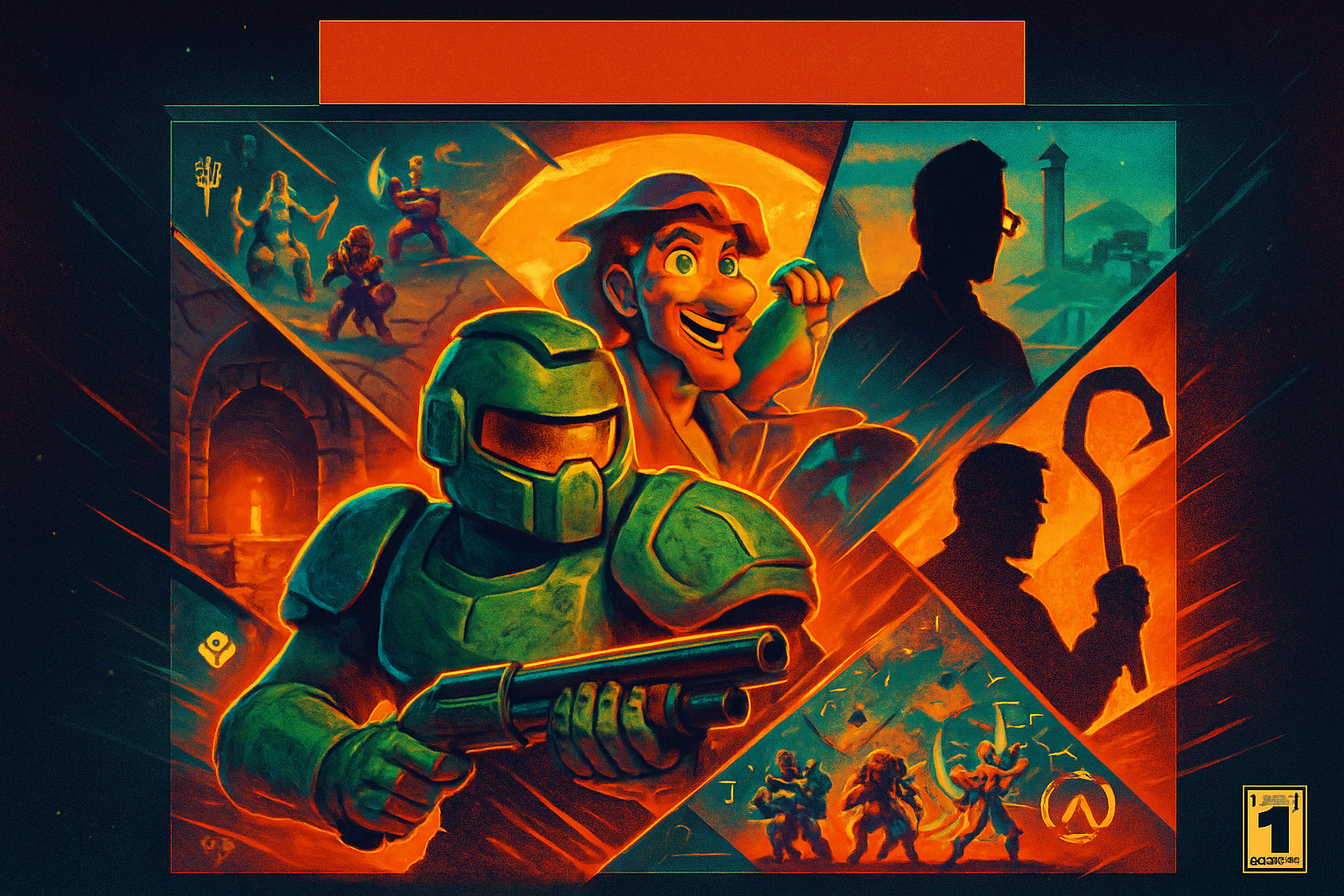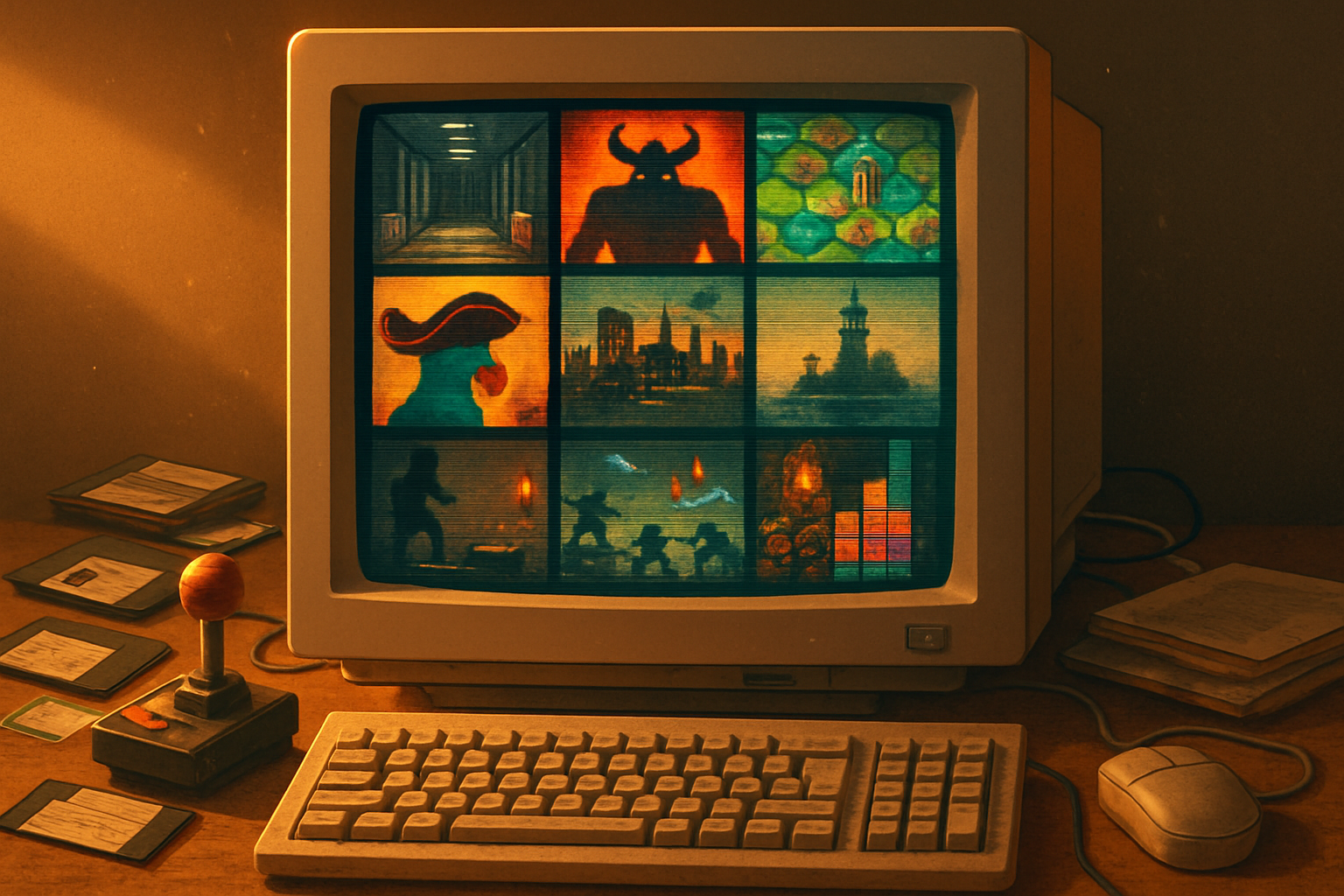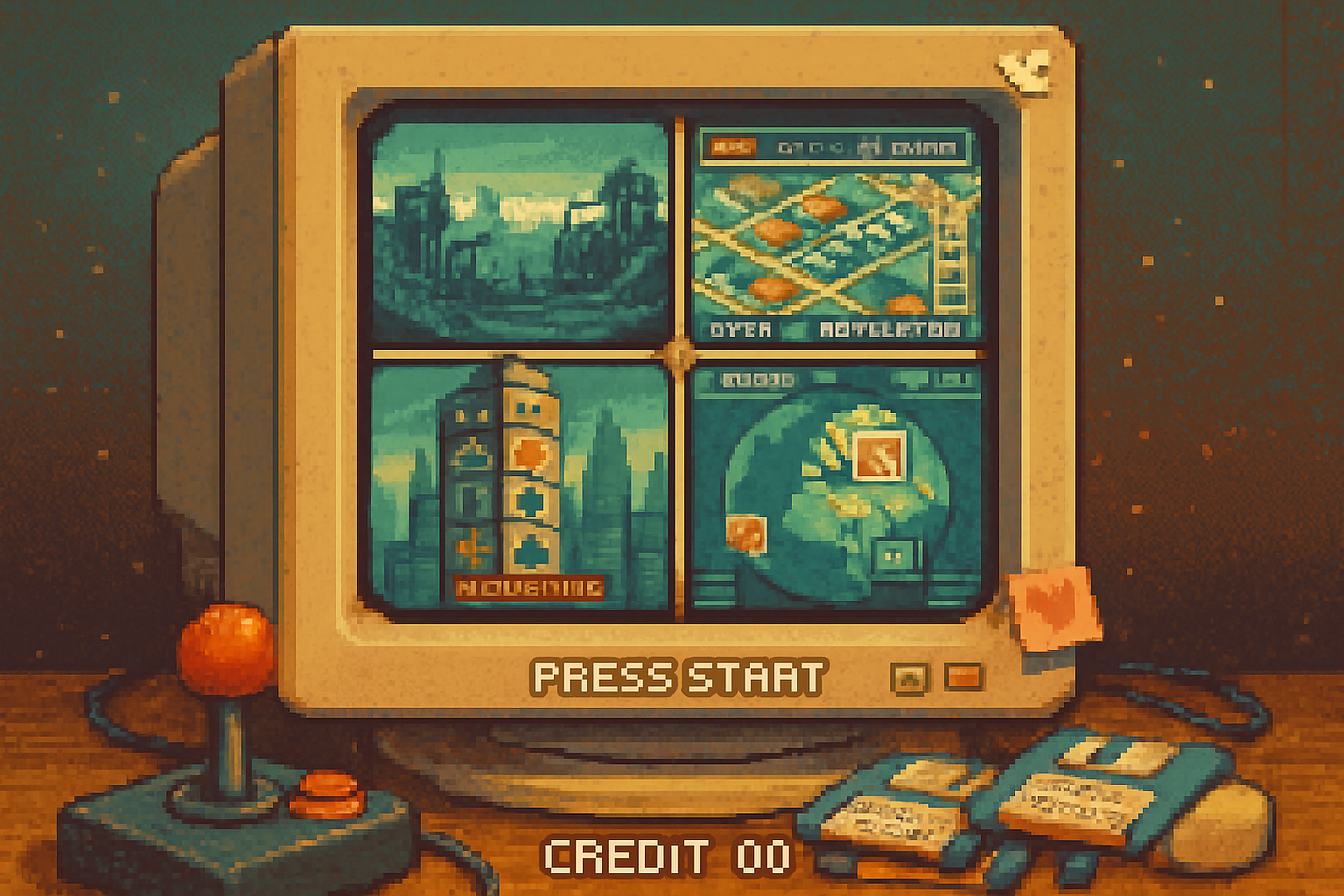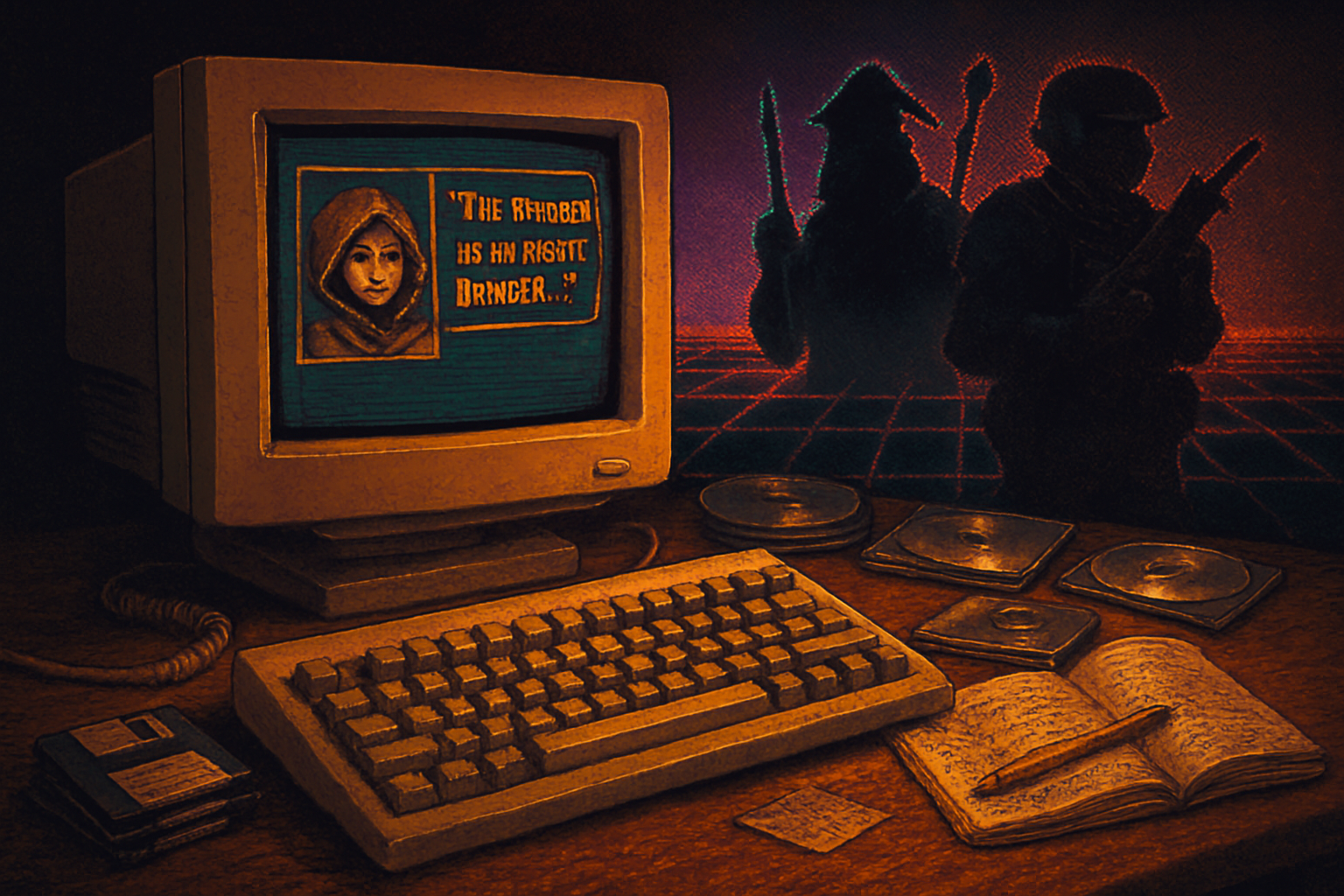· 6 min read
Top 5 Best-Selling Retro PC Games and What Made Them Iconic
A deep look at five of the best-selling retro PC titles - why they sold so well, the innovations that made them stand out, and the ways they shaped modern gaming.
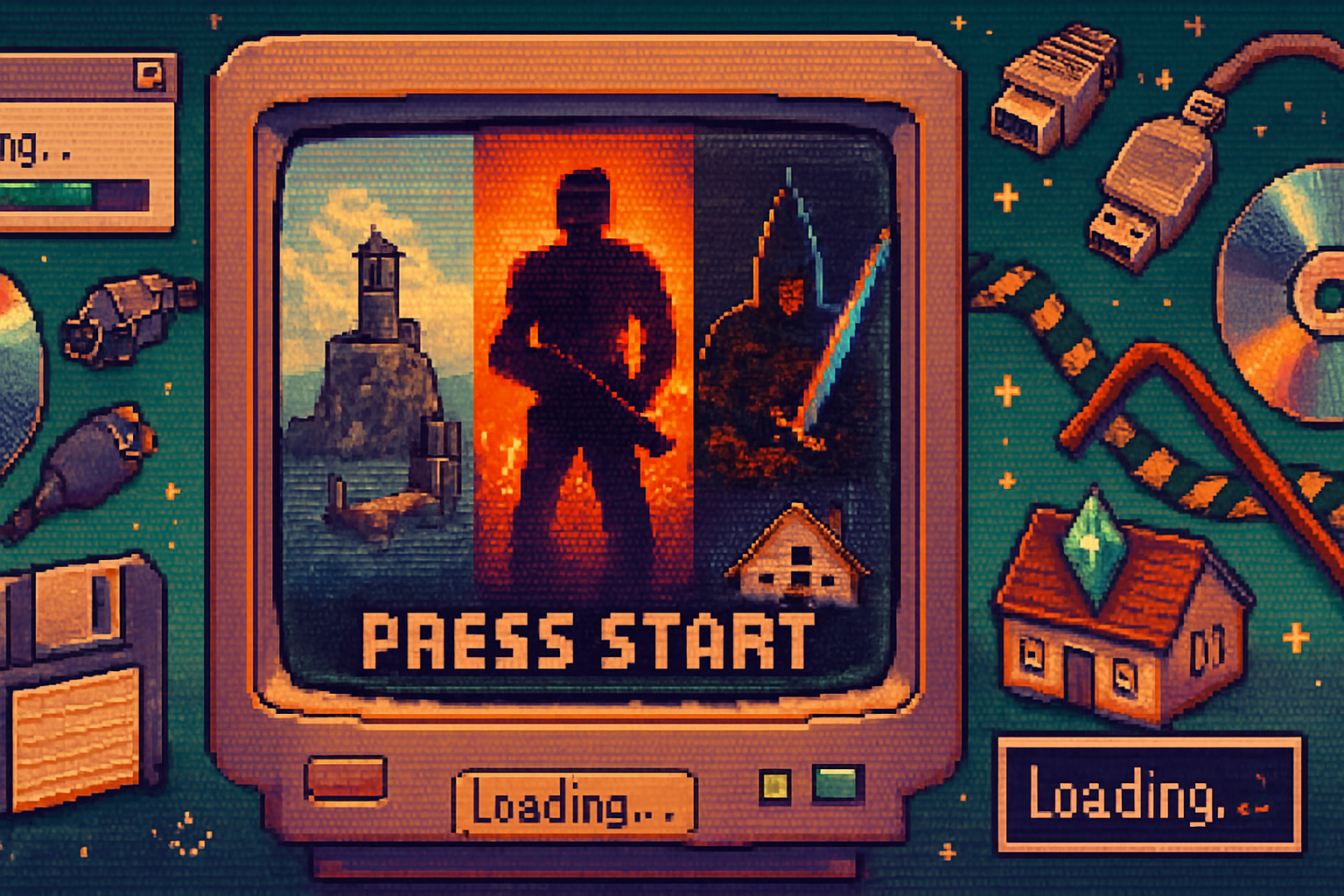
Introduction
The 1990s and early 2000s were a golden era for PC gaming: affordable CD-ROM drives arrived, persistent online services emerged, shareware distribution spread, and genres that still dominate today were invented or refined. Some titles didn’t just sell well - they changed how games were made, marketed, distributed, and played.
Below are five retro PC titles widely recognized as among the best-selling of their era. For each I explain the unique mix of design, technology, and timing that drove sales and turned them into cultural touchstones.
How “retro” and “best-selling” are defined here
- “Retro” - primarily released in the 1990s and very early 2000s, when the modern PC market (CD-ROMs, 3D acceleration, broadband beginnings) took shape.
- “Best-selling” - selected by historic sales milestones, contemporary impact, and their recurring presence on lists of all-time PC best-sellers. (Sources cited for each game.)
The list (in no strict numeric order)
- The Sims (2000)
Why it sold
- Mass-market appeal - The Sims tapped beyond the typical “gamer” audience by offering open-ended, low-pressure play that appealed to casual players and people interested in creativity and social simulation.
- Expandability - Regular expansion packs kept the game fresh and provided ongoing revenue and press.
- Accessible systems - Low barrier to entry - players could jump in without twitch skills.
What made it iconic
- Emergent storytelling - Players created their own narratives rather than following a fixed plot.
- Life-simulation mechanics - A rich interaction system (needs, traits, objects) modeled everyday life in a way few games had before.
- Cultural reach - The Sims became a mainstream phenomenon, spawning TV appearances, merchandising, and an enduring franchise.
Legacy
The Sims proved that simulation and sandbox games could be huge commercial successes and that non-violent, social-focused games could reach a mass audience. It also normalized expansion-pack business models still used across the industry. See The Sims’ history and impact on its Wikipedia page [https://en.wikipedia.org/wiki/The_Sims].
- Myst (1993)
Why it sold
- Cutting-edge presentation - Myst used pre-rendered visuals and CD-ROM audio to create a cinematic, immersive experience that showcased the technical potential of CD-ROM drives.
- Broad appeal - Its slow, contemplative puzzle design appealed to players who enjoyed atmosphere and mystery over action.
- Early mainstream exposure - Myst was marketed to general consumers and sold in bookstores and electronics retailers as well as game stores.
What made it iconic
- A new kind of immersion - Myst felt like exploring a living picture book; its sound design and visuals were revolutionary for mainstream PC audiences at the time.
- Puzzle-driven storytelling - Rather than explicit exposition, Myst relied on environment and artifacts to reveal its story, influencing later adventure and walking-sim titles.
Legacy
Myst helped popularize CD-ROM as a medium for rich interactive experiences and proved computer games could be presented as artistic, non-violent entertainment for adults. For more on Myst’s cultural role, see its Wikipedia entry [https://en.wikipedia.org/wiki/Myst_(video_game)] and retrospectives such as this Wired retrospective [https://www.wired.com/1994/08/myst/].
- Doom (1993)
Why it sold
- Shareware distribution - A free shareware episode lowered the barrier to trying the game, driving broad adoption and word-of-mouth.
- Fast, visceral gameplay - Doom’s speed, weapon variety, and level design created an immediate, repeatable thrill.
- Technical showcase - Smooth first-person action and advanced level design showed off PC hardware and pushed 3D aesthetics forward.
What made it iconic
- Birth of the modern FPS - Doom standardized mechanics (health, pickups, diverse weapons), level flow, and enemy design for shooters.
- Modding and community - Its openness (WAD files, level editors) created an active modding community that extended the game’s life and seeded talents and ideas for the industry.
- Multiplayer foundations - Early networked deathmatches showed the potential of online competitive play.
Legacy
Doom arguably defined the first-person shooter genre and established community modding as a major force. Its influence is documented in its Wikipedia article and many retrospectives, such as the piece on IGN highlighting Doom’s impact [https://en.wikipedia.org/wiki/Doom_(1993_video_game)] and retrospectives like this one on IGN [https://www.ign.com/articles/2013/12/12/doom-20th-anniversary-retrospective].
- Diablo II (2000)
Why it sold
- Addictive loop - Fast-paced combat, randomized loot, and meaningful character progression produced a compelling play loop that encouraged repeated play sessions.
- Strong online integration - Battle.net support and ladder systems turned Diablo II into a social, highly replayable experience.
- Balanced accessibility and depth - Quick pickup-and-play action combined with deep itemization and character builds satisfied both casual and hardcore players.
What made it iconic
- Loot-driven gameplay - Diablo II perfected the “hunt-for-better-gear” sensation that would inform countless action RPGs.
- Economies and trading - The trading culture and item rarity systems created emergent social systems within the community.
- Seasonal/evolving meta - Competitive ladder play and patches shaped evolving strategies and community discussion.
Legacy
Diablo II’s design created a template for action RPG balance between moment-to-moment action and long-term character progression. Its influence persists in modern looter-shooter and ARPG design. See Diablo II’s development and impact at Wikipedia [https://en.wikipedia.org/wiki/Diablo_II] and retrospectives about loot-driven games.
- Half-Life (1998)
Why it sold
- Integrated narrative - Rather than cutscenes, Half-Life used scripted in-game sequences to tell a coherent, immersive story.
- Intelligent level design - Environments, scripted events, and pacing combined to create a cinematic single-player FPS experience.
- Modding and community - Like Doom, Half-Life’s engine became the foundation for mods-most notably Counter-Strike, which itself became a major cultural and commercial success.
What made it iconic
- Storytelling in an FPS - Half-Life raised expectations for narrative and immersion in action games.
- Engine and mod ecosystem - The GoldSrc engine and mod tools allowed creative communities to build new game modes and even commercially successful titles.
Legacy
Half-Life reshaped how story and gameplay could coexist in shooters, and its mod-driven ecosystem birthed genres and esports titles. See Half-Life’s influence on Wikipedia [https://en.wikipedia.org/wiki/Half-Life] and the story of Counter-Strike’s mod origins [https://en.wikipedia.org/wiki/Counter-Strike].
What these games had in common
- Timing and technology alignment - Each title arrived as a new platform or technology (CD-ROMs, sharing models, broadband beginnings, or improved 3D acceleration) made its strengths visible and marketable.
- Clear identity - Whether it was “exploration and atmosphere” (Myst), “sandbox social sim” (The Sims), or “fast-paced shooter” (Doom), each offered a focused, compelling core experience.
- Community and replayability - Mod tools, expansion packs, randomized systems, or multiplayer modes kept players engaged and helped spread the word.
- Accessibility and depth - Many balanced immediate, intuitive play with deeper systems to master - a potent combination for both acquisition and retention.
How they shaped the industry
- New genres and expectations - The Sims and Diablo II created or refined genres; Doom and Half-Life established FPS conventions and storytelling methods.
- Business models - Expansion packs, shareware distribution, and online services foreshadowed modern DLC, free-to-try models, and always-online ecosystems.
- Community-driven content - Modding communities around Doom and Half-Life proved that player-created content is a powerful engine for longevity and innovation.
Conclusion
The best-selling retro PC titles above share a striking lesson: commercial success and lasting influence typically come from a blend of technical innovation, memorable core gameplay, and the ability to foster communities. These games weren’t merely popular in their time - they seeded design patterns, business models, and player expectations that still shape games today.
Further reading
- The Sims - Wikipedia: https://en.wikipedia.org/wiki/The_Sims
- Myst - Wikipedia: https://en.wikipedia.org/wiki/Myst_(video_game)
- Doom (1993) - Wikipedia: https://en.wikipedia.org/wiki/Doom_(1993_video_game)
- Diablo II - Wikipedia: https://en.wikipedia.org/wiki/Diablo_II
- Half-Life - Wikipedia: https://en.wikipedia.org/wiki/Half-Life
- On Doom’s influence - IGN retrospective:
